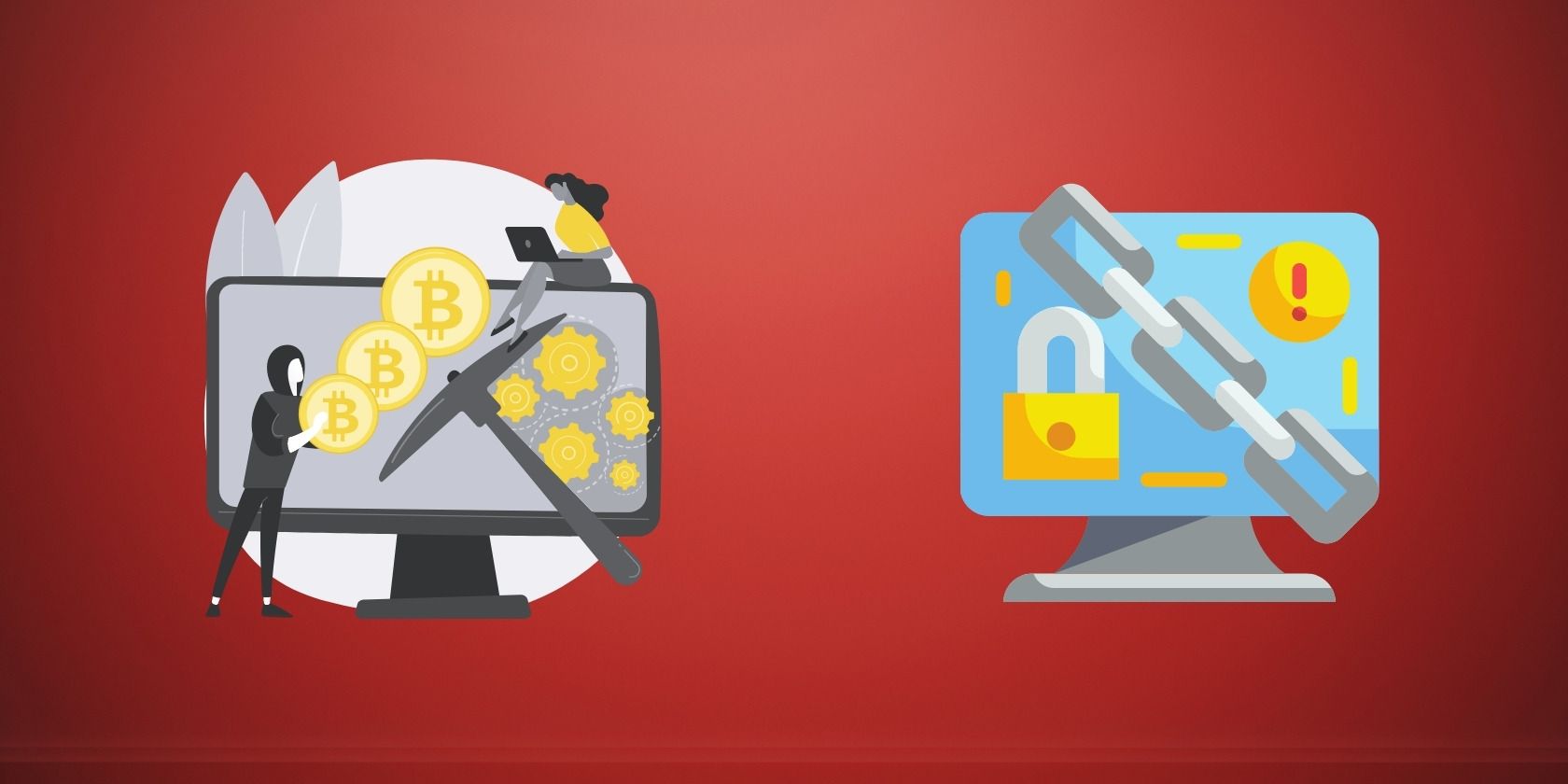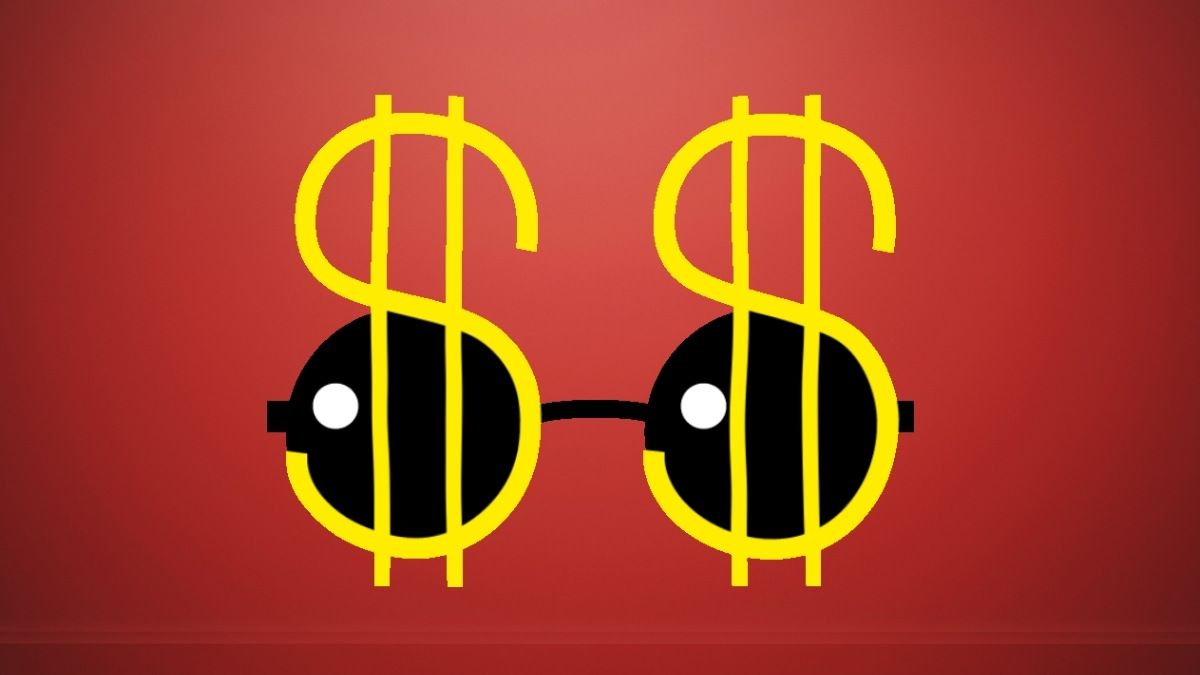Cryptojacking and ransomware are some of the hot buzzwords that you may have come across regarding cybersecurity threats.
But what are the differences between the two? Which is more widespread? And what is more dangerous to users?
Cryptojacking vs. Ransomware: What Do They Mean?
Cryptojacking is the illegal practice of mining cryptocurrency on a compromised web server or a computer.
While crypto mining is not exactly illegal, the technique of mining by an attacker without authorized access to your device or server is known as cryptojacking. If you are curious, you should learn what crypto mining is and how it works.
And, ransomware is a virus or malware that locks down your files and demands you pay a ransom to unlock them and let you access everything again.
Both are increasingly a concern in the digital world, especially when considering how ransomware impacts the health sector.
How Do They Affect You?
Ransomware can only affect you if you download a malicious file to your computer and interact with it. The affected file downloads the ransomware separately when the user interacts with it.
Once it starts its course of action, you will notice that some, or all of your files have become inaccessible. Some files might end with different extension names (like 1txt, enc, xyz).
Every ransomware strain is distinctive, so file extensions could vary as well.
When it comes to cryptojacking, a computer can similarly get affected in the same way when you download malicious software.
However, it can also impact you without needing to install any software. A compromised website that you visit frequently may be running a crypto mining code, and that could be unnoticeable. And you have no control over it either.
Now that you have a general idea about them, a few more differences should help you distinguish them better.
How Widespread Are Ransomware and Cryptojacking?
Ransomware usually gets the spotlight for some of the biggest cybersecurity news, but cryptojacking has overtaken ransomware as the preferred choice for attackers in 2021.
Microsoft considers cryptojacking as the biggest threat, overtaking ransomware in terms of its notoriety.
Ransomware vs. Cryptojacking: Which Causes More Damage?
Ransomware locks you out of your files. So, if you do not have a back-up, you will be in a tough spot whether to pay the ransom or not. Either way, if you had any sensitive files that you do not want to be sold on the dark web, that's an added concern.
In that way, ransomware affects your data and results in potential data theft.
In contrast, cryptojacking does not affect your files at all. Instead, it eats up your system resources in the background. It utilizes your system’s computing power and mines crypto to send rewards to the attacker.
And it can also end up maxing out your system resources and so disrupt the services.
Ransomware focuses on the data while cryptojacking does not. But both of them can result in service disruptions for an individual or a network.
Can You Detect Ransomware and Cryptojacking?
While ransomware has managed to bypass antivirus protection in some test cases, it cannot go unnoticed. The whole point of it is to get noticed: when you can't access files, or your system is locked down completely, a ransom demand will be issued.
On the other hand, crypto miner software or a website running mining code may go unnoticed.
So, when it comes to cryptojacking, you will have to inspect your background processes or additional software programs if you notice a significant performance impact on your computer or server.
Rewards for Attackers
You may have assumed that ransomware attacks give better rewards to malicious actors. But, now that more organizations are declining to pay the ransoms demanded, it's not quite as effective as it used to be. That is, it's still a huge cyberthreat not to be underestimated, but more companies have back-ups in place to counteract ransomware.
While cybercriminals can still make money using ransomware, the level of effort and complexity involved is way too much for the return they could get.
In contrast, cryptojacking is easier and is more rewarding in the long run, considering cryptocurrency may have a promising future.
It's not just the reward for the effort, but cryptojacking is also harder to detect, so its effectiveness for getting rewards is also better when compared to ransomware.
Which Is Easier to Remove?
Even though cryptojacking is tougher to detect, it is easier to get rid of—you have to pinpoint the rogue process, i.e. code in the website or program, and stop and uninstall it.
In contrast, for ransomware, unless you have a decryptor, you will need to wipe your device to resume operations. And you lose data in the process. That is, unless you have a back-up or intend to pay the ransom (and even then, you've no guarantee that the hackers will be true to their word and unlock your files without releasing any information online).
While it is best to wipe the whole device if you are affected by either, it is tough to recover from a ransomware attack if you want your files intact.
Which Is More Dangerous?
Cryptojacking is more rewarding for attackers, but it may not affect your data. However, it does affect your hardware if it constantly maxes out your system resources. And this could result in a system failure, which may lead to data loss as well.
On the other hand, ransomware can directly end in a data loss or data leak, but it does not affect the hardware. And, if your data gets leaked or sold online, you will be at risk of identity theft, and cybercriminals will know more about you to lure you into malicious campaigns easily.
How to Stay Safe From Ransomware and Cryptojacking
For ransomware protection, you need to actively watch out for what you download and interact with, especially when installing software.
Staying safe from cryptojacking can be a little tricky if you do not know when a website you visit is running a crypto mining code. But, if you keep an eye on your task manager and background processes when using the computer, you may be able to spot a rogue process taking more resources than usual.
Antivirus protection comes in handy to defend against both of these. Nonetheless, it's ultimately down to you: you are the one who needs to watch out for what you do with your computer or server to prevent getting affected by any of these malicious attacks.



